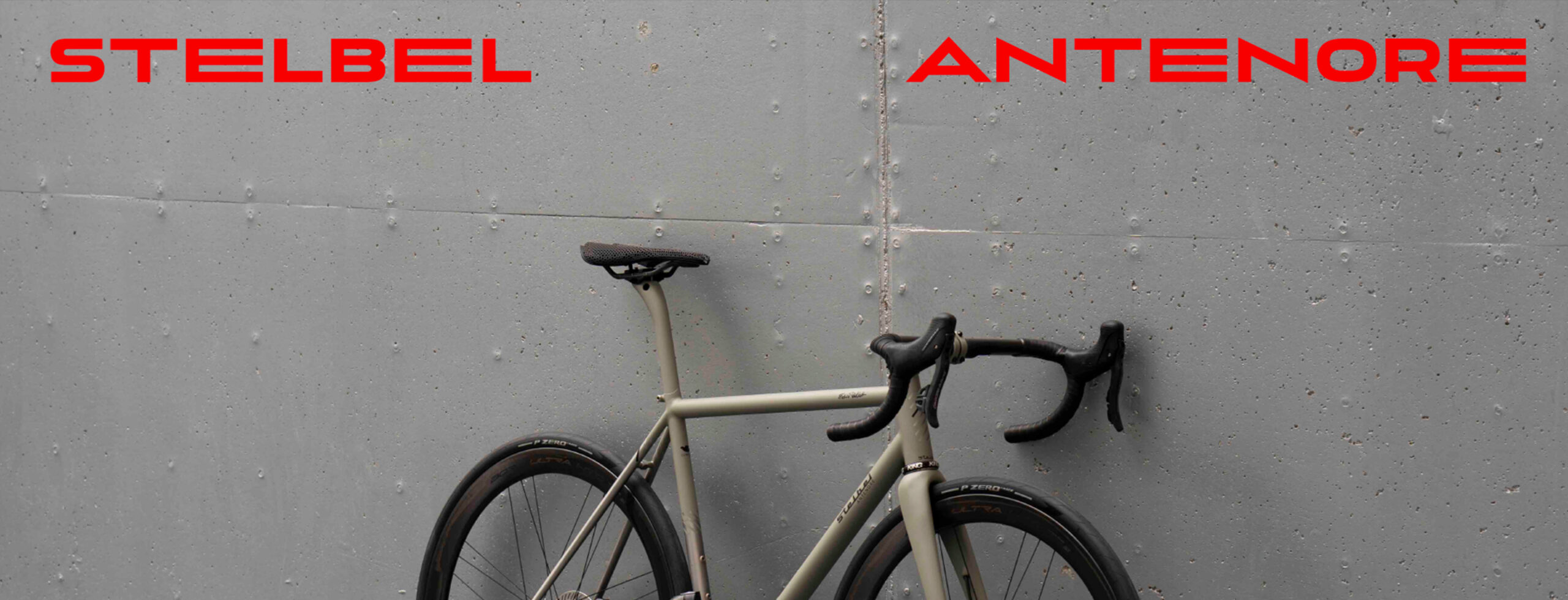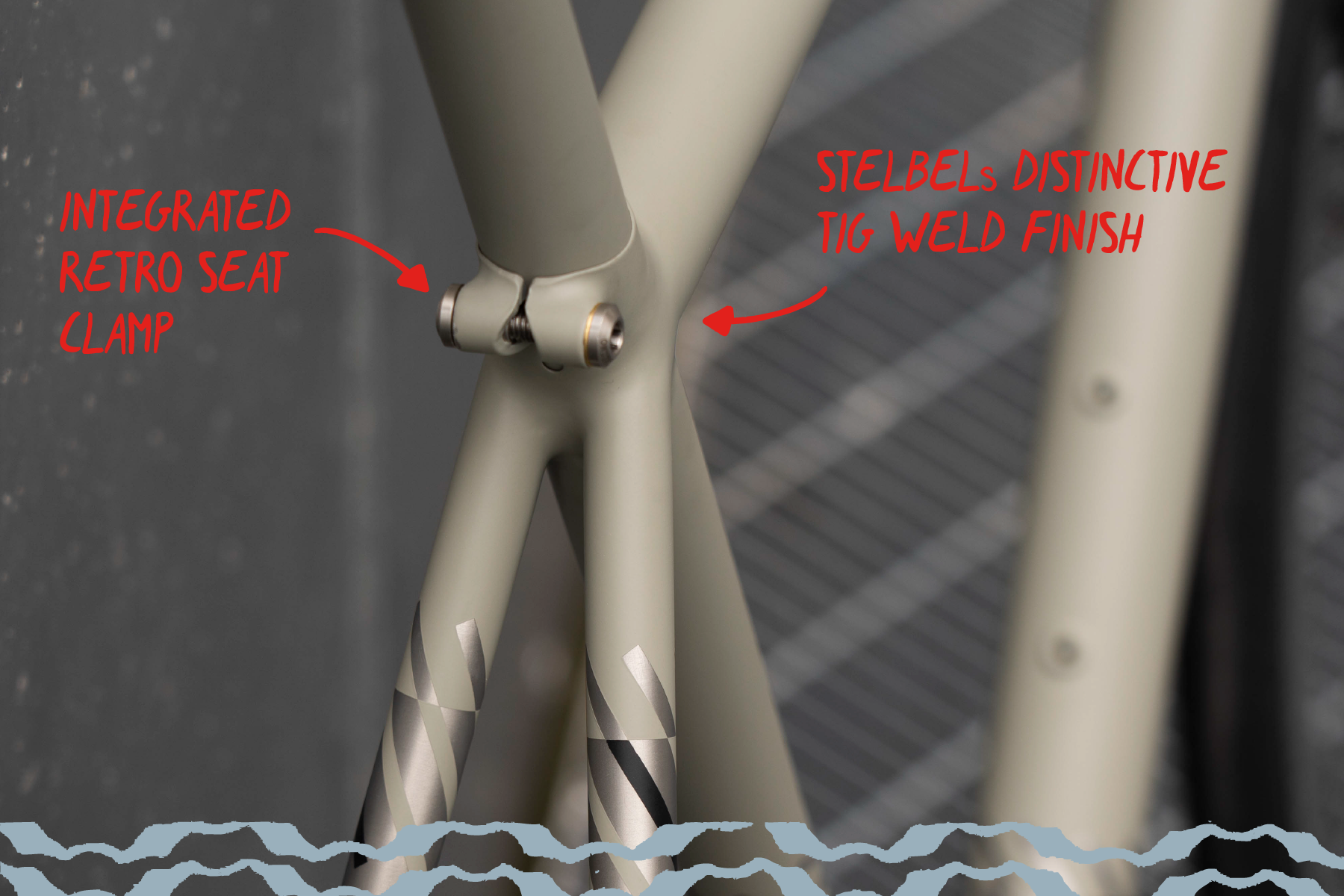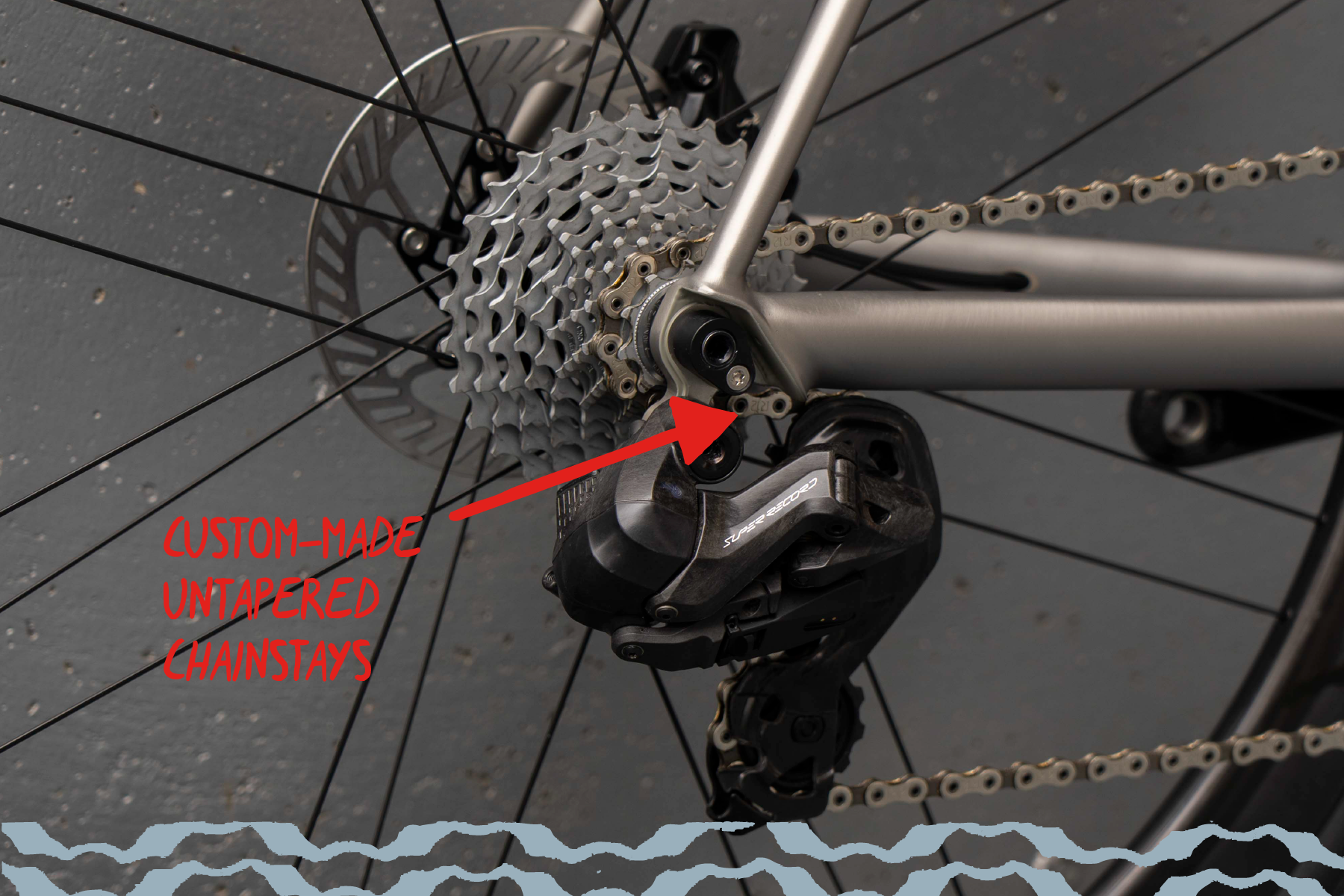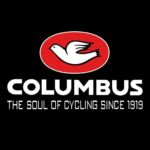Here we are with a new episode of Heart of Metal. This time at Stelbel HQ, in Bergamo.
With Andrea Cimò and Alessandro Caccia. Sharing some fresh Gelato Contadino.
Hello, it’s good to be here. How do we begin this chat about Stelbel?
Let’s start from the beginning of the story. It was 1973, when Stelbel was founded by Stelio Belletti, hence the strange-sounding acronym, Stel Bel.
Stelio, as well as being a keen amateur cyclist, worked in the field of welding of various kinds, but his experience in the aeronautical, motorbike and automotive fields put him, together with his father Antenore, in the small workshop at 75 Via Giovanni Amadeo, just opposite the first Lambrate station, in the Ortica area of Milan, in contact with the then renowned engineers working in those fields. Until the late 1960s, they had been involved in repairing military fuselages left on Italian soil by the Americans. These pioneering engineers introduced Stelio to TIG welding, which had begun to be used in America.
The fame of Stelio Belletti’s precision work also spread abroad, so much so that foreign motorbike racers came to have their motorbike frames fixed by Stelio and Antenore Belletti, a mechanical genius. Stelio became an expert in TIG welding and specialized, also following his own passions, in bicycle frames which, welded with this new technique, resulted stiffer and lighter than the typical joint frames.
Things went very well and the amateur circuit frequented by Stelio started asking for Stelio’s frames, until it become a real brand.
Today Stelbel lives up to its founding values. Stelio was here with us yesterday to talk about the fiftieth anniversary of the founding, it was an exciting moment, and he is very happy that we have remained consistent and faithful to his philosophy and technique. And, as far as technique is concerned, the work is done as it was originally, so we devote all the time and expertise necessary to achieve and deliver a perfect and recognisable Stelbel frame.
When did Stelbel start using Columbus tubing? And why?
Since Stelio’s speciality was TIG welding, he always used metal and always used the tubing made by Columbus who was also his neighbour in the area of Ortica.
With Stelio, we met in 2009 thanks to the Stelbel vintage bikes, of which we have quite a collection. Those bikes were different from all the others of the same era, so we were eager to know who had done those somewhat incredible masterpieces. So we met, we talked a lot and liked each others and kept in touch. Until 2013, when we realised that Stelio would have been happy to see his frames in production again. We found an agreement and acquired the brand.
In 2014, with a great collaboration of Columbus, we moved on to develop a range of frames, starting from the tubing catalogues and strengthened by the historical relation between Stelbel and Columbus. Despite the fact that we were really small at the time, at Columbus we found fertile ground and willingness to experiment, to look for the most suitable solution, in order to find the exact custom tubes necessary to realise our projects, both on an aesthetic and on the technical level, with reinforcements, machining, diameters, shapes… In 2014, we really dedicated ourselves to testing solutions with you.
Since March 2015, we have been on the market with the opening of our official website. And of course, since then we have only ever used Columbus tubes, except for titanium, at least at the moment.
What tubes?
All top of the range, mainly Spirit and XCr but also Life tubing sets, combined according to the design and needs. But above all a number of custom tubings that Columbus kindly makes for us. We have our codes in your database and Adriana, when we order a certain code, knows that we are ordering a specific Columbus x Stelbel customized tubing.
The differences that can be noticed when working the tubing…
We can’t notice differences from the other brands, because we have always used Columbus; we can spot differences in working the different tubings made of different materials: historically the brand is synonymous with the highest quality and we know we that the product has consistency in composition, in specification… so what you notice on a technical level is the experience in producing high quality tubing for frames. As well as having, together, created new tubing, with characteristics designed in collaboration. With great pride we have the columbine on all our frames and custom tubing. Also thanks to Stelio and Stelbel, a project dear to many that was worth resuming and passing on to the present day.
If you could give me three words to define Columbus?
Consistency, because it is fundamental that the product is always perfect and within tolerances and in this Columbus is a master.
Iconic, because it’s an icon of cycling and the time on the market and the value of the columbine on the frame prove it.
Innovation, as Columbus makes a classic material contemporary.
What frame are you presenting us today?
Antenore, the name of Stelio’s father, who is, in our opinion, the most ingenious mechanic to have crossed Italian soil.
Antenore is a road frame that was introduced early 2016, made with Columbus XCr tubing, your stainless cold drawn tubing. We are very focused on road frames and we have four road models in our range. Antenore is special because XCr gives exclusivity to the model, and not only because of the extremely precious raw material that is well processed but also because it requires great skill and expertise in welding and in every phase of production and in obtaining a frame that has the performance it deserves. Again, there are tubes that have been made specifically for Stelbel from XCr steel.
The most significant is the wheelbase that does not have the tapered chain stays, which increases the portion at the dropout – there is a dropout that is specially designed for a larger section, a solution that has been tested in several variants: to manage the contact surfaces between the chain stays and dropouts so that the stresses and bending are constantly managed along the whole area.
Why did you choose these tubes and diameters?
Because on the top end of the Columbus tube range, we already offered other products with certain characteristics; in fact we created a range that would also fit into the Columbus catalogue, and then customised certain tubes according to the specific needs of that particular frame.
These tubes for endurance, these for performance, those to have a mix between endurance and performance, and a further advantage lies in the fact that they are stainless. XCr tubes are the best quality, cold drawn up to 15 times and up to a thickness (best, thinness) of 0.4. Amazing.
In combination with the Columbus tubing we have always used Columbus carbon forks, which we find adequate and balanced for our needs. The entire range to date is fitted with Columbus forks, rim, gravel, disc road in the standards compatible with our models.
And another aspect to highlight because it sets us apart, is the special welding of the Stelbel frames.
It is TIG welding but it originated at a time when it was definitely not ‘aesthetic’, in the Seventies, and it was a bit lumpy and uneven. So Stelio used to weld with beads that had a certain cross-section and then finish them with filings made by hand. Today, TIG welds are much more aesthetic but we wanted to maintain the original aesthetics and technique, which is distinctive to the eye but also stiffens the jointed section. There is an extra heat theme that has to be managed but we do this with equipment that we have designed and made in-house and in this way we avoid deformation and overheating.
So the welding seams are still ‘thick’ and then processed. Nowadays it makes no sense to work like that, it’s putting in to take out, it’s time-consuming to then file down the abundance of filler material. But to be an original Stelbel, for the sake of the brand, we decided to keep this and spend the necessary time to obtain it.
It is signature: one thing that therefore sets us apart is this long process of finishing the frame after construction.
Do you paint the frames made from XCr tubes?
We paint them partially. Basically, the frame comes out of production with a brushed finish; we partially paint it with a front paint cut, which then leaves the back in raw, brushed steel. The paint is traditional and we still cover the visually unfinished steel with a matt clear coat to prevent the slightest oxidation and to give a different aesthetic look and feel. Our satin-finished and painted XCr, while leaving it raw, has a different look from any other brand.
But we haven’t mentioned the other end of the process, which is the design, drawing and prototyping production of all the small parts, or almost all of them: the different solutions for dropouts, bottom bracket shells, headset reinforcements, and saddle clamps made in house and inspired by the Stelbel line of the past. All to find the best balance for each component that has a technical, physical and mechanical role.
Do you sell frames only or also complete bikes?
Since April 2023, we give the customer the choice between the frame only option and the complete bike, but within certain guidelines: you can get a frame and fork; or a frame kit, i.e. frame fork headset stem handlebar seatpost (with custom painted stem and seatpost in the same colour as the frame); or a complete bike assembled with the different options on the market.
We use a Columbus hidden cables fork of 1 1/2″ below and customise it according to our proprietary Evoluzione hidden cable system. While discussing the aesthetics of the internal cables, we found many solutions on the market that aesthetically clash with a frame with classic lines like the Antenore, or any other frame made of round tubing, as bulky handlebar stems or 1 1/2″ or larger top bearings than we are used to. We did our tests but nothing worked. So the effort was to give the frame a look exactly like the traditional one but hiding the cables. This Evoluzione system also stood out because it leaves the aesthetics of the front of the bike intact, which was not the case with the other solutions.
Another peculiar thing is that we don’t stock Antenore nor any other Stelbel frame. They are only made to order and made to measure. We don’t have geometry charts and each frame has a different geometry balanced to the customer’s needs. The delivery time of a frame is 14 months because they are in high demand and because the process is very slow and accurate.
Which are Stelbel main markets? And the identikit of your customer, if you know…
The three main markets are North America, North Europe, and South East Asia. Our customer has a strong sensitivity to Italian aesthetics and frame building tradition, who loves metal frames and appreciates the uniqueness of the product. And they choose Stelbel for all the reasons listed above in our conversation. The tubing, the small parts, the customisation, the distinctive features, the technical solutions that maintain a recognisable classic aesthetic. All of this concurs to the choice of a Stelbel frame. And also the consistency in telling and respecting the value of the story and a very strict quality control. The word of mouth keeps being is our best sales channel. We believe that putting our soul into making something that is not the typical steel frame, together with all our sweat and efforts, mean something. And it exudes from the material and form of which the Stelbel frame is made of.












